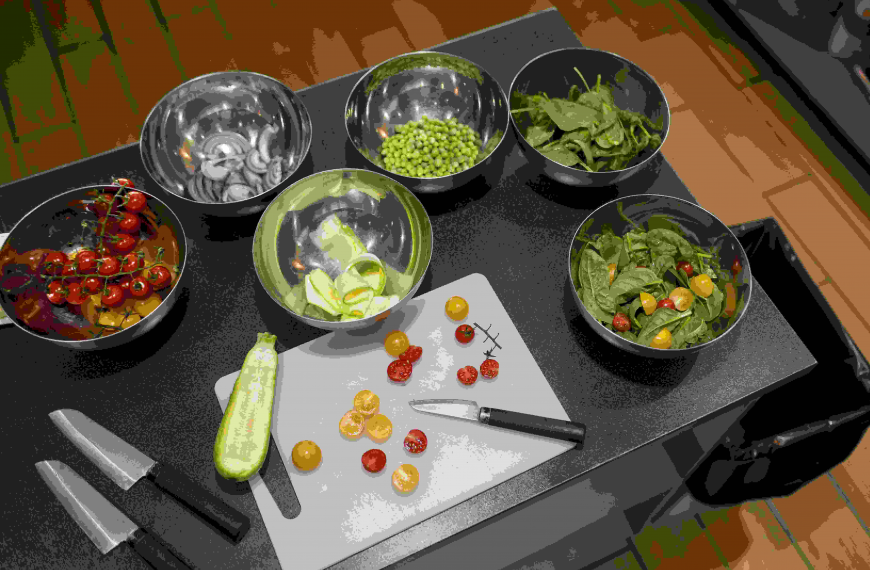Technology has reached greater levels and is far more advanced compared to technologies of the past. As a result, printed circuit boards have risen in demand and usage across different niches, whether they are for consumers or used in different applications. However, we must be aware that each PCB is not a “size fits all” solution. Some devices and projects may demand a specific type of printed circuit board.
In this article, we’ll discuss the differences between an HDI PCB and a traditional PCB and discover which type is right for your projects.
HDI PCBs and Traditional PCBs: Their Properties and Differences
Before we delve deeper into this matter, let’s kick it off by understanding the differences between an HDI PCB board and a traditional one. Traditional printed circuit boards are boards that supply your devices with bigger drill sizes, traces, and easier stackup, and they can be mounted with different components depending on the device that will be powered by them. The boards usually consist of a substrate containing copper conductors, which allows them to form electrical linkages with other components. These circuit boards are usually not very complex in layers, drill size, copper trace width and components types, they tend to be on the large side and are bulky in build.
On the other hand, an HDI PCB board is a circuit board that has a higher density of components per unit area. They are kind of similar to a traditional PCB in terms of composition, but they are noticeably smaller, more compact, and have more complex appearances. The boards, as said earlier, have a high density of components per unit area, making them more responsive. So very small drill sizes and copper traces are designed in PCBs, and blind and buried vias are commonly used in HDI circuit boards. It is also capable of making more connections, making it ideal for very responsive gadgets and devices such as the smartphones that we use every day.
When should I use a traditional PCB?
Now that we’ve arrived at the main topic which is knowing when to utilize the two featured circuit boards. Let’s start with the traditional PCBs. Listed in this section are some project or product ideas where you can harness the potential of a traditional printed circuit board.
1. Simple-use multimedia electronics
Most of the consumer products that we have at home may utilize a traditional PCB. Notable examples and applications where manufacturers can apply its usage are on televisions, FM radios, stereo or audio systems, and an MP3 player. Traditional PCBs can power up these devices to ensure that they can entertain us when they are active.
Traditional PCBs are also used inside certain multimedia apparatuses, such as videogame controllers, wherein the boards are crucial in the input of commands by the player. However, the traditional boards tend to cater to classic game controllers whereas the more complex variants utilize HDI PCBs.
2. Lighting and Power Control Systems
Power supplies and certain types of lighting also utilize traditional PCBs to ensure their respective functions can be fulfilled. On the side of power supply or control systems, PCBs embedded inside them will ensure proper functions, such as switching off the power during emergencies or certain operations.
Whereas in the case of lighting, simple and traditional PCBs will help in making sure the lighting is well-distributed and shines consistently. The types of lighting that these PCBs tend to be embedded within are lighting boards, which you can see in commercial spaces such as storefronts and malls.
3. Communication Devices
Traditional PCBs also see utilization within simple communication devices; the most notable example is the landline telephone that we use to reach out to loved ones. Traditional PCBs do also see utilization inside cell phones and walkie-talkies, wherein the features of these devices tend to be on the simplistic side compared to their smartphone counterparts.
When to Utilize a HDI PCB?
An HDI PCB design may cover the same grounds and niches that a traditional PCB occupies. However, compared to their standard counterparts, HDI variants tend to function at a higher level, allowing them to power up complex devices. In this section, just to show the distinction between the two, we’ll cover the areas where HDI PCB usage tends to shine more.
1. High-Responsive Technologies
Devices such as VR headsets, smartphones, and Apple watches utilize HDI PCBs to function well. These are high-responsive devices that require an individual’s input, therefore necessitating the embedding of HDI boards within them. This will ensure that the smartphone can receive its user’s touch, VR displays the scenery and elements properly, and Apple watches function as intended.
In addition to those devices, laptops, and high-end desktop computers also require an HDI PCB for the optimal user experience; every type and input will allow these devices to carry them out with ease.
2. Automotive Applications
An HDI PCB also sees usage in the automotive niche. Examples of projects where automotive applications utilize an HDI board are GPS, touch-screen modules, and driver assistance systems, which help elevate the driving experience.
By extension, an HDI board also helps in the smooth functioning of multimedia modules such as a car’s built-in audio and entertainment system, which are more compact compared to their household counterparts.
3. Aerospace and Military Usage
An HDI PCB manufacturer finds the aerospace and defense niches a good prospect since they utilize a lot of advanced technologies and complex devices that require these boards. Notable applications and projects where an HDI board sees use are radar systems, missiles, smart munitions, drones, and avionics found inside civilian and military aircraft.
4. Healthcare
The healthcare niche tends to seek out an HDI PCB manufacturing company as their tools and equipment have demanding performance requirements. Notable applications of an HDI circuit board in the healthcare space are surgical robots, pacemakers, implants, prosthetics, and hearing aids.
By embedding an HDI board within them, these tools and devices are capable of facilitating smooth operations within the hospital and elevating patient outcomes to the best possible result.
It all boils down to your Project or Niche
To summarize what we’ve covered, HDI PCBs and traditional PCBs can elevate the functionality of the devices they are installed in. They offer almost similar advantages and composition, but in terms of appearance, traditional PCBs tend to be larger, while HDI variants are more compact.
The difference between the two widens when it comes to application and usage, where traditional PCBs tend to fare better in simplistic devices such as everyday appliances and lighting. Whereas, an HDI PCB can overlap with the traditional board’s niches but can handle more complex areas such as healthcare, aerospace, and the like due to their equipment needing a higher level of performance.
When you intend to purchase or manufacture PCBs, know first what project or niche you intend to use or sell them in. Once you have a grasp on where to utilize them, that’s when you can start harnessing the potential of either traditional or HDI boards.














